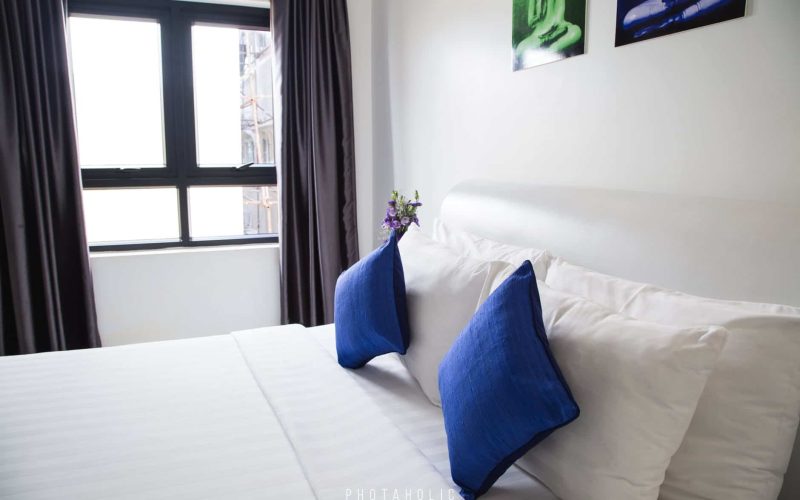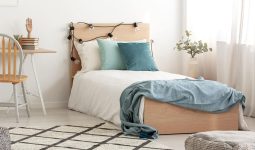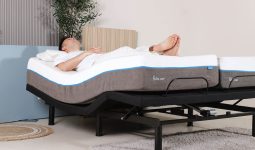You can use several different types of comforters on your beds, depending on what you want.
Comforters are a versatile type of bedding that you may use in any season. But, aside from down-filled covers, have you ever wondered if there are other types of comforters?
We researched to find a wide range of comforters to meet various requirements. Continue reading to learn about the most flexible and elegant comforters available.
Furthermore, a comforter is a soft, thick blanket that keeps you warm. Comforters can be purchased alone or as part of a set with matching sheets.
The majority of comforters are pretty puffy and have quilted embellishments. However, there are a few exceptions.
Comforters are an excellent method to give your regular sleep the sensation of a hotel room. They’re a terrific way to transform a little bed into something fit for a king.
This style of thick bedding instantly modifies the silhouette of your bed by concealing the thin sheets beneath.
Conversely, a decent comforter is likely to cost several times as much as regular sheets.
They’re also somewhat bulky, making them difficult to store while not in use. As a result, most people do not own as many comforters as they do bedsheet sets.
With the excellent comforter, you can get a better night’s sleep or find a peaceful moment under luxurious bedding.
Continue to learn more about the advantages of these different types of comforters. Here’s a rundown of some different types of comforters to look into:
1. Bamboo
Bamboo fibers are a little more sensitive than cotton fibers, but they also provide more softness for a lower price.
This is one of the different types of comforters. Bamboo is generally as soft as expensive cotton, yet it only costs around the same as a mid-range counterpart.
Most bamboo fibers are now created from recycled bamboo, making them a more environmentally friendly option.
Furthermore, bamboo is an exceptionally breathable fabric, which is perfect if you want to lie on top of your comforter to watch TV or bond with your roommates.
2. Brocade
Brocade belongs to the damask and jacquard fabric families and is frequently used for exquisite table linens and other fine textiles.
Check the care tags on a brocade comforter. Water shrinks this fabric, so it’ll probably need to be dry-cleaned.
The majority of brocade comforters are made of cotton, although some are also constructed of polyester.
Expect a thread count of 300 or greater and a hypoallergenic down, poly-fiber, or cotton filling in this heavier fabric comforter. Machine washable faux brocade blankets with an imitated pattern. Furthermore, they are attractive and ideal for cold weather.
3. Cotton
Cotton is a flexible textile popular for comforter construction. You can find a high-end cotton comforter with a thread count of 600 or a Percale blanket with over 200.
Cotton blankets are popular among sleepers because they are breathable, hypoallergenic, easy to clean, and feel fantastic on the skin.
Warmer weather calls for thinner profile comforters, but colder weather calls for an oversized, fluffy cotton comforter stuffed with down. When you’re done, toss it in the washing machine.
4. Silk
If you are prone to overheating, choose a silk comforter for all seasons. The material is inherently airy, stylish, and moisture-resistant.
This bedding is ideal for sleepers who are prone to overheating. It would be best not to wash this blanket style and send it to a professional or clean it on the spot if necessary. Furthermore, it is soft and luxurious to the touch.
5. Wool
Wool is the coziest winter cloth, while silk is the most opulent summer fabric. Also, Wool has somewhat heavier strands, making using your comforter as a weighted blanket possible. This is one of the different types of comforters.
Wool also has a lot of versatility with its long-lasting colors, patterns, and combinations. Choose a flannel comforter if you want something gentler on your skin.
Furthermore, if you can handle something a little more challenging but want intricate designs that will last for years, jacquard wool is the way to go.
Wool can usually withstand a few cycles in the washer, but it takes a long time to dry.
6. Down-Filled
The most traditional type of blanket style is down-filled comforters, commonly filled with goose feathers.
Duck feathers, which behave similarly to goose down, are a less expensive alternative. Cotton, polyester, or bamboo are the most common materials used in down comforters.
7. Suede
Suede may be able to reach the ideal spot for you if you like raw animal prints and don’t mind hiring a dry cleaner. It is one of the softest animal-based textiles available and frequently gives some warmth.
Suede is tough to keep clean, but if you put in the work, it is a material that will last a lifetime. It also looks good in a country-inspired or rustic setting.
However, if you choose a vegan-friendly alternative, a faux-suede shell will provide you with many of the same benefits.
8. Flannel
Flannel is a warm and inviting fabric that works well in a country or rustic setting. Keep a lint roller available to keep fuzzies at bay, but you may wash this blanket in the washing machine.
When drying your blanket, use a low temperature and wash it separately from other objects. This is one of the different types of comforters.
9. Fleece
A fleece blanket will keep you cool because it wicks away moisture and regulates temperature—warm up beneath the textured, ultra-soft fibers.
Fleece blankets are durable, machine washable, and suitable for moderate to freezing temperatures. Also, Stain treats the blanket before washing and tumbles dry it on the cool setting.
10. Synthetic Fibers
Artificial fibers are, in many respects, a separate category. Most of these fillings are designed to resemble down in terms of feel and weight.
They’re usually less expensive and easy to clean. However, they are less breathable and may not last as long: synthetic fibers can quickly run off or lump on one side of the comforter, depending on its structure. Furthermore, If this occurs, you will almost certainly need to purchase
11. Linen
This bedding is appropriate for all seasons because it keeps you cool in the summer and warm in the winter. To extend the life of a linen comforter, use a moderate liquid detergent instead of washing powder and wash in cold water.
12. Microfiber
Microfiber is non-irritating and hypoallergenic, and it feels great on the skin. This material comprises excellent polyester strands and is both moisture-wicking and breathable.
However, if you’re worried about dust mites, a microfiber blanket is a good choice because it’s resistant to them.
13. Jacquard
Jacquard fabric is woven from cotton, linen, or silk and is appreciated for its exquisite design motifs. Send your jacquard comforter to the dry cleaners to ensure its lifespan and stuffing. When the weather becomes cold, pull out this comforter.
Furthermore, Designs that are pleasing to the eye are ideal for traditional bedrooms. The Profile is also solid and long-lasting.
14. Fur
With a comforter made from genuine animal fur, you can take a trip to the wild side (or opt for faux fur). You’ll receive a blanket with plenty of warmth, texture, and a plush sleeping experience.
When you’re ready to wash your faux fur blanket, use a soft cycle and mild detergent. Furthermore, when the weather gets cold, bring out this comforter and put it away when it becomes warm.
15. Polyester
Polyester is less expensive than natural fibers like silk or wool because it is synthetic.
Also, Polyester comforters are less breathable than cotton comforters, but they are excellent at trapping heat in cold weather without making you sweat.
Find a 200-thread-count polyester blanket that is both fluffy and sturdy. This is one type of comforter.
The advantage of this type of comforter is that Moisture and heat don’t stick to it. It is also a Breathable, cool-to-the-touch, inexpensive, and lightweight material.
16. Sateen
Satin comforters are softer than plain woven cotton comforters, but they have a shorter lifespan. A sateen comforter with a thread count of 300 to 400 is available.
Without the expensive price tag, get the benefits of wrinkle resistance and a premium look and feel. Separate from other items, wash in the washer with cold water and a moderate detergent.
Furthermore, they are Stain—and wear-resistant, look and feel like luxury, and become softer over time.








